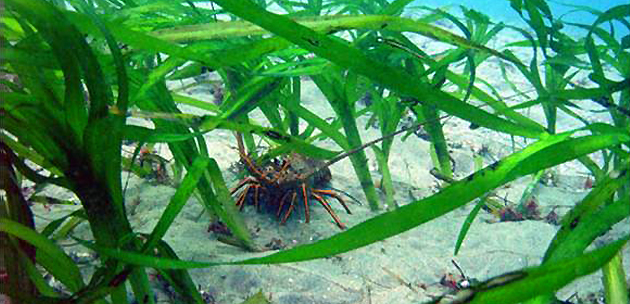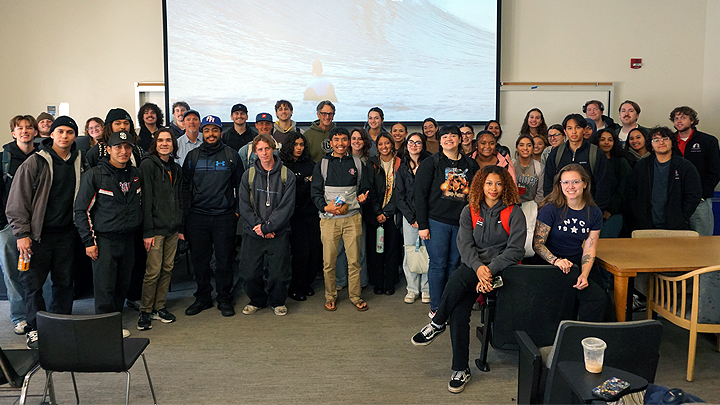Spiny Lobsters 411
SDSU biologist Kevin Hovel leads a San Diego-based team studying a valuable fishery species in Southern California.

As a new network of marine protected areas go into effect in Southern California this fall, researchers will have the opportunity to gather valuable information about California’s coastline.
One San Diego-based team, led by San Diego State biology professor Kevin Hovel, is setting out to examine spiny lobsters, a valuable fishery species in Southern California.
“The California spiny lobster is a species of great ecological, economic and cultural significance in Southern California,” said Hovel, principal investigator of the team. “As a heavily fished organism in our waters, it is a priority species for protection in the marine protected areas.”
About marine protected areas
The areas were created under the California Marine Life Protection Act, signed into law in 1999. The act directs the state to create and manage a network of marine protected areas along California’s coastline that protect marine life, habitats and ecosystems and improve the recreational and educational opportunities that marine ecosystems provide.
“Interest in lobsters has risen in California, and more than one third of the catch comes from the Southern California region.”
Thanks to funding from California SeaGrant, the team now has the means to study spiny lobsters more than ever before.
“In the past decade, interest in lobsters has risen in California, and more than one third of the catch comes from the Southern California region,” Hovel said. “This is a great opportunity to more comprehensively answer questions, such as ‘what is the effect of these areas on lobster populations?’”
The research team is comprised of scientists from SDSU, Scripps Institution of Oceanography and the California Department of Fish and Game; fishermen from the California Lobster Trap Fishermen’s Association; seafood buyers and volunteers recruited by the nonprofit San Diego Oceans Foundation.

Spiny lobster research is one of many ways SDSU faculty are leading innovation and discovery, whether it’s developing homeland security technologies or creating better vaccines. With a unique focus on the teacher-scholar model, SDSU attracts researchers interested in solving the world’s most pressing problems, while showing students how to provide future solutions. Learn more.
Research goals
Their goal is to generate information on baseline levels of lobster abundance as the areas go into effect this October. They will then measure the population in the future to see what changes have occurred as a result of the new network.
The team will gather information through dive surveys, which involve scuba diving inside and outside of six different marine protected areas to count lobsters. Since lobster abundance and behavior depend on what habitats are available on the ocean floor, researchers will also use sonar (sound waves) to create underwater habitat maps and will use this to determine which habitats are most valuable for lobsters.
Researchers will also work with commercial fishermen to estimate the lobster population. Through a “mark and recapture” process, they will be able to track lobsters through plastic tags, which are inserted into the animal’s muscle but are visible above the shell.
As the lobsters are recaptured periodically, the tags will help determine the size of the population and how far a particular lobster has traveled since being tagged. This will also help the team measure the size of "spillover," a process whereby animals in the marine protected areas move out of them and become part of the fishery. Researchers are also asking fishermen to report tagged lobsters if they catch them by calling the phone number on the tag.
Shedding light on spiny lobsters
In the end, researchers hope to shed light on spiny lobsters and their population, behavior, habitats and the fisheries they support. Hovel points out that the diversity of his team will help in doing this.
“The interaction among people having different expertise, experiences and opinions about marine protected areas, lobsters and the lobster fishery will generate a robust collaboration which we expect will be of value to the state and to everyone interested in the fate of lobsters and the health of our coastal ocean.”



